 |
 |
 |
The Shinkansen budget (70.6
billion yen in FY 2005 budget) accounts for only 0.95%
of public works-related expenditures. |
| |
 |
| Public works project-related
expenditures in FY 2005 budget |
 |
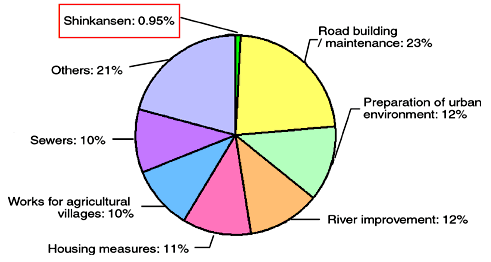 |
|
 |
 |
 |
Results in benefit of outstanding
time savings and large increases in number of passengers |
| |
| (Outstanding time
savings) |
| On Kyushu Shinkansen
(between Shin-Yatsushiro and Kagoshima Chuo), Hakata-Kagoshima
Chuo |
 |
On Hokuriku Shinkansen (Takasaki - Nagano), Tokyo
- Nagano |
 |
|
 |
 |
| |
| (Large increase in number
of passengers) |
| Increase in number of passengers
on Kyushu Shinkansen (Shin-Yatsushiro - Kagoshima
Chuo) |
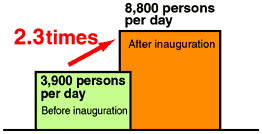 |
| Number of
users of former express and Shinkansen lines one
year before and after line inauguration |
|
 |
 |
 |
Big economic ripple benefit (Surge
in commercial buildings) |
| |
Kyushu Shinkansen
Surge in large commercial buildings in front of
Kagoshima Chuo Station
(26% increase over forecast sales within one month
after inauguration) |
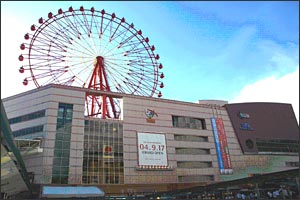 |
 |
Hokuriku Shinkansen
New location at Sakudaira Station (0 buildings to 60) |
| Before development |
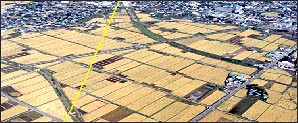 |
| After inauguration |
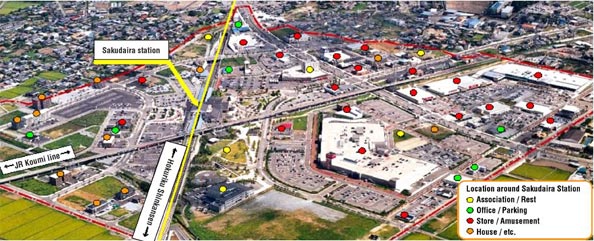 |
| Enlargement
is here. |
|
 |
 |
| |
| (Increase in tourism demand) |
| Increase in tourist-related
consumption due to the inauguration of the Tohoku
Shinkansen (Morioka - Hachinohe) |
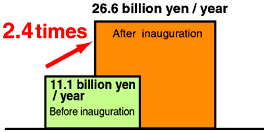 |
|